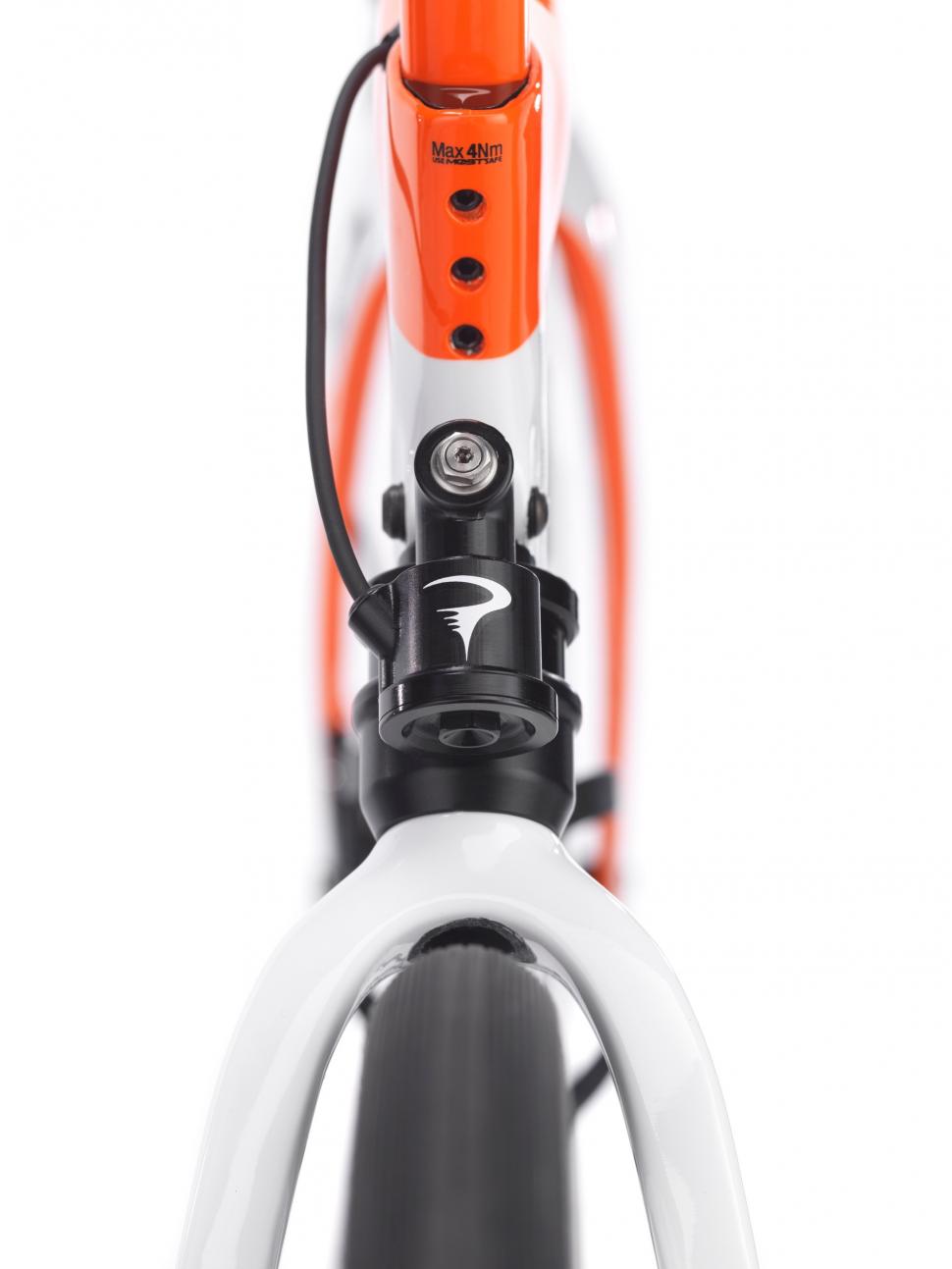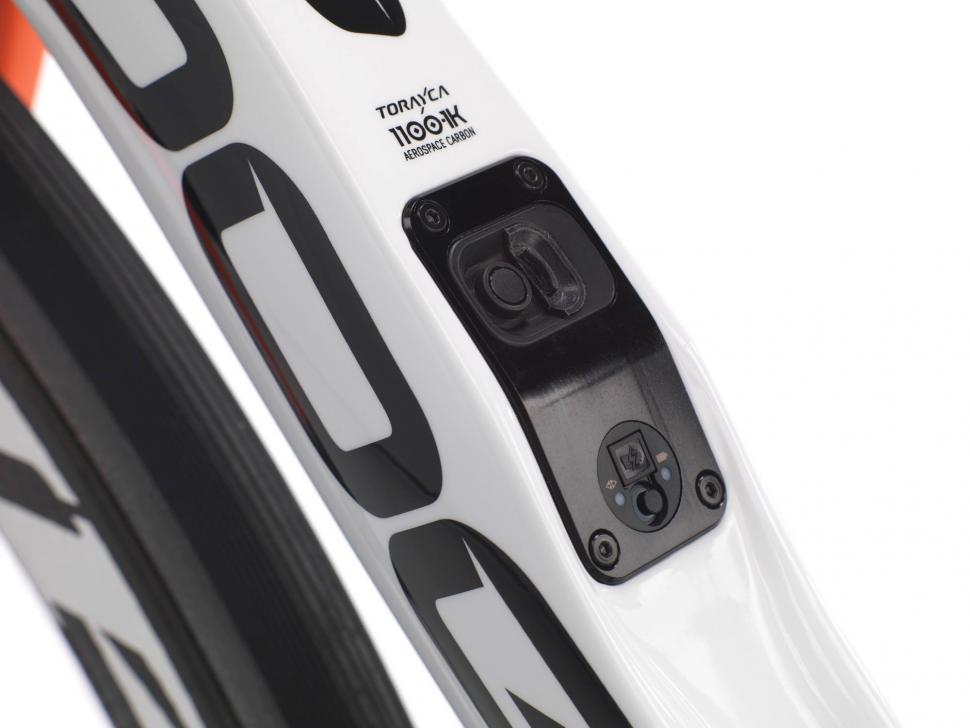- News
- Reviews
- Bikes
- Accessories
- Accessories - misc
- Computer mounts
- Bags
- Bar ends
- Bike bags & cases
- Bottle cages
- Bottles
- Cameras
- Car racks
- Child seats
- Computers
- Glasses
- GPS units
- Helmets
- Lights - front
- Lights - rear
- Lights - sets
- Locks
- Mirrors
- Mudguards
- Racks
- Pumps & CO2 inflators
- Puncture kits
- Reflectives
- Smart watches
- Stands and racks
- Trailers
- Clothing
- Components
- Bar tape & grips
- Bottom brackets
- Brake & gear cables
- Brake & STI levers
- Brake pads & spares
- Brakes
- Cassettes & freewheels
- Chains
- Chainsets & chainrings
- Derailleurs - front
- Derailleurs - rear
- Forks
- Gear levers & shifters
- Groupsets
- Handlebars & extensions
- Headsets
- Hubs
- Inner tubes
- Pedals
- Quick releases & skewers
- Saddles
- Seatposts
- Stems
- Wheels
- Tyres
- Health, fitness and nutrition
- Tools and workshop
- Miscellaneous
- Cross country mountain bikes
- Tubeless valves
- Buyers Guides
- Features
- Forum
- Recommends
- Podcast
TECH NEWS
Pinarello Dogma K10S Disc: Electronically adjustable rear suspension via Garmin Edge
A couple of years ago Pinarello worked with Team Sky and Bradley Wiggins to launch the K8-S, a bike which coupled flexible chainstays with a small damper at the top of the seat stays to provide a bit of extra cushioning for riding over cobbles.
This week it has just launched the new Dogma K10S Disc, an evolution of that original bike with the DDS 1.0 damper upgraded to eDSS 2.0, which provides the added benefit of electronic control and adds disc brakes to the mix. The bike has already been spotted in the wild, without disc brakes, Team Sky’s Ian Stannard was spotted riding the prototype bike.
- 24 of the best 2017 sportive bikes — great bikes for long, fast endurance rides in comfort
The 1cm of available suspension travel, achieved via an elastomer spring and hydraulic damper, can now be locked out for smooth road sections and activated when the going gets rough. The previous bike offered adjustment but not on the move. As well as simply locking and unlocking the suspension, you can also choose between a firm or softer setup to suit the road conditions.
Pinarello partnered with a suspension specialist company called HiRide to develop the electronically adjustable suspension. There are six axis accelerometers and gyroscopes that are able to take feedback from the road and adjust the damper unit accordingly. Pinarello says it’s able to read the road and understand the bicycle dynamics and lock and unlock the suspension in real time.
Alternatively, the suspension can also be controlled via a Garmin Edge computer with a dedicated app the bike company has developed. This allows you to control the suspension from the handlebars which is more appealing for rides where you’re constantly swapping the rough for the smooth, such as Paris-Roubaix with its short sections of cobbled roads.
“I am very happy with this new and ambitious project that PinarelloLab developed with the collaboration of HiRide. The introduction of an electro-hydraulic control system establishes an important step forward in the technological evolution of our bikes, improving performance and increasing safety,” commented Fausto Pinarello.
Away from the suspension, the K10S Disc gets the same updates that the recent K10 rim brake model also received, with changes trickled down from the F10, Chris Froome’s race bike. There’s the same Flatback shaped downtube which now also houses the Di2 junction box for easy access and neater packaging, in what Pinarello is calling the E-link port. On the K10S Disc the controller for the rear suspension is also located in this port. The electronics are powered by a battery pack housed somewhere in the frame, connected to the shock via a cable.
The geometry is typical endurance bike stuff, with a longer fork rake, slacker head angle and longer wheelbase via stretched chainstays. There are thru-axles front and rear and flat mounts for the disc brake calipers. Tyre clearance is increased, it’ll take a maximum of a 28mm tyre.
The endurance bike market is an interesting one at the moment, with some quite different approaches to offering the necessary smooth ride that customers of these bikes crave. They’re also bikes developed by and for pro riders to tackle the cobbled classics, leading to some interesting developments like the Specialized Roubaix and Trek Domane, the former with a spring in the head tube and the latter with a pivoting seat tube and flexible steerer tube.
And then there are bikes like the Cannondale Synapse and Giant Defy that steer clear of suspension in favour of working with tube shapes and carbon layup to provide targeted deflection. What’s clear is that there are different bikes that will suit different requirements and tastes. The Pinarello system sounds a smart system on paper but does introduce a level of complexity that might not appeal to everyone, and we can’t help wondering how the front end smoothness will compare to the back half of the bike. We're certainly keen to get a ride on it to see how it does ride.
- First Ride: Pinarello Dogma K8-S
What do you think?
David worked on the road.cc tech team from 2012-2020. Previously he was editor of Bikemagic.com and before that staff writer at RCUK. He's a seasoned cyclist of all disciplines, from road to mountain biking, touring to cyclo-cross, he only wishes he had time to ride them all. He's mildly competitive, though he'll never admit it, and is a frequent road racer but is too lazy to do really well. He currently resides in the Cotswolds, and you can now find him over on his own YouTube channel David Arthur - Just Ride Bikes.
Latest Comments
- brooksby 4 hours 2 min ago
I trust that you also encourage motorists to buy white or yellow cars and to shun vehicles the colour of a wet road?
- stonojnr 4 hours 20 min ago
nah they just read the question as do you always not leave the recommended 1.5m when overtaking cyclists. I know people overestimate their...
- David9694 4 hours 28 min ago
Worcester hospital parking 'horrific' as petition handed in...
- stonojnr 4 hours 29 min ago
Ive never seen the figures broken down by who reports them, you can kind of infer things from stats, like Ive seen them break it down as careless...
- Hirsute 4 hours 56 min ago
Are you going to answer?
- wtjs 5 hours 8 min ago
No more of this! HP will turn to stone!!
- wtjs 5 hours 18 min ago
I'm using 700c, 9-speed 46/30 with a ?-34 cassette for all my cycling including the Bob trailer. It's about right - I can't get up everything on my...
- Bmblbzzz 7 hours 24 min ago
"A brutalist interpretation of a road" So true. Grey markings on grey paving slabs surrounded by other grey paving slabs...
- Simon E 7 hours 8 min ago
Driver in a Citroen travelling at 70mph crashes into the front of a house in Canterbury Road, Faversham at 5.30am on Sunday....
- arichman 7 hours 57 min ago
Somewhat confusingly, Velocio includes both a fit and a size chart, and says to use the fit chart (which uses height and weight) as the guide for...












Add new comment
8 comments
Haven't tried them, but I prefer the sound of the Cannondale / Giant approach to any of the suspension options. If there is a benefit to suspension then for both comfort and control I would have thought the Spesh head tube to be better than messing around at the back.
28mm maximum tyre clearance? For a bike designed for rough roads?! Oops. I really don't understand why so many bikes have such limited clearance. I struggle to believe that it really improves performance. If you're riding rough stuff, there's a fair chance of bits of gravel getting stuck on the tyre and gouging the frame too.
I don't think using saddle weight is the best solution - you may stand up on rough stuff and locking the suspension out and giving your legs an unecessary beating isn't really optimal. Reducing suspension movement when you stand up was one of the claimed benefits of URT designs (unified rear triangle) in the early 90s, but everyone eventually realised that it was a rubbish idea.
I don't really fancy fiddling with a Garmin to adjust the suspension. Just sounds too fiddly. I'd probably prefer to reach down to a button on the down tube.
My experience with my mountain bike on road is that the lockout doesn't really help much if the shock has good damping and the suspension is well designed. I tend to just run it open even on road stretches, even though I tend to run my shocks relatively soft for an XC bike (I like my suspension to actually work!)
The 33mm version would add 5mm of extra suspension...
Wow - a whole 1cm of travel. Impressive stuff.
shades of the early MTB suspension days, 2.5cm? [whistles]
Just buy a mountain bike and be done with it
ya don't need suspension when standing on the pedals, only when sit on the saddle; why not just sense the wheight on the saddle, et voilà, problem solved. (it's not from me, it's someone from the MTB World whom i don't remember ). It's not perfect but a move in the right direction. Much more simple than this Garmin solution.
"the suspension can also be controlled via a Garmin Edge computer"
When the garmin isn't crashing, restarting, freezing or being thrown in the nearest bush.